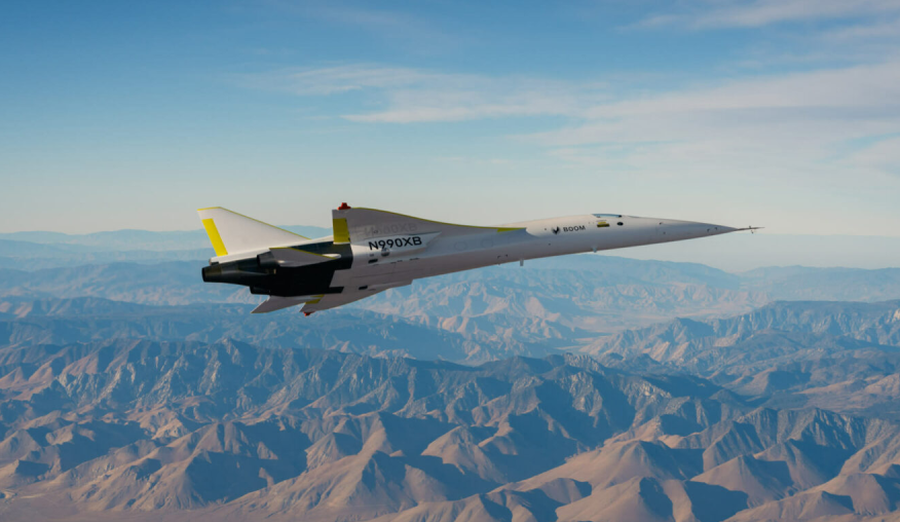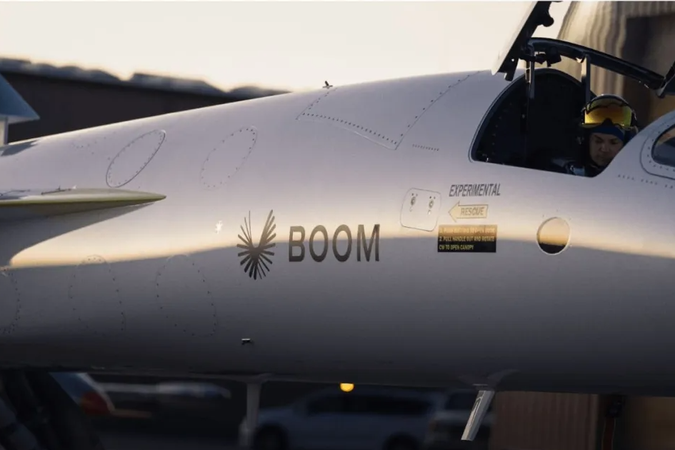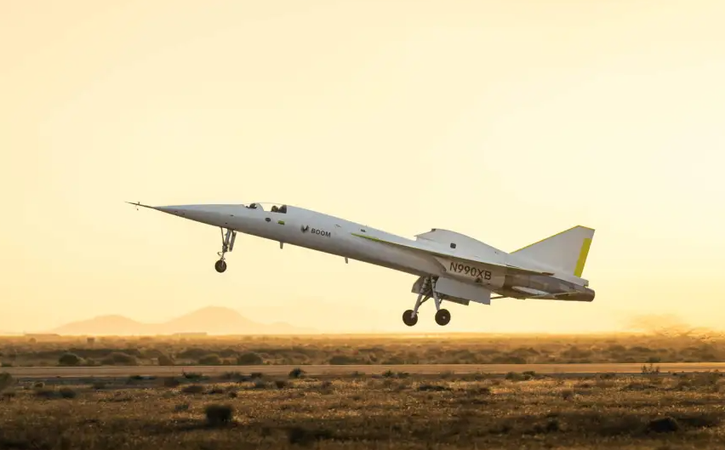
The XB-1 plane, popularly known as the "son" of the legendary Concorde, seems to be on the right track to break the sound barrier. According to a release from the supersonic plane's makers, the XB-1 reached Mach 0.95 at 9,880 meters in a test flight on December 19, setting a new speed and altitude record.
Colorado-based Boom Technology executives confirmed that the aircraft was capable of reproducing transonic speeds of Mach 0.95, or 730 mph.
Mach 1 and above is when an aircraft can be classified as supersonic.
Meanwhile, in a flight on January 10, the XB-1 reached near-supersonic speeds at a maximum altitude of 9,880 meters, slightly higher than Mount Everest.
"The flight of 11 again reached a maximum transonic speed of Mach 0.95, higher than the flight speed of today's aircraft. An aircraft flies at transonic level when it reaches the speed range just below supersonic, which is Mach 1. Mach 1 is about 1234 km/h", the company said in an update on the test carried out.

The flight, piloted by chief test pilot Tristan Brandenburg, completed final handling checks before its first supersonic flight.
The 44-minute flight pushed the aircraft's dynamic pressure to 383 KEAS ( knot equivalent airspeed ), which is higher than what would be experienced at Mach 1.1.
At supersonic speeds, the XB-1 aircraft can fly passengers from London to New York in just 3.5 hours, a major step towards revolutionizing this industry, as the flight in question currently takes approximately 8 hours.

There has been no commercial aircraft capable of supersonic flight since Concorde. Supersonic jets were banned in the UK more than 20 years ago because they were considered too noisy. The United States banned them even earlier, in 1973, because the noises were so loud they rattled apartment windows.
In November, Dawn Aerospace claimed its MK-11 Aurora jet was the first to reach supersonic speed since Concorde in a test flight, breaking the sound barrier at Mach 1.1. (A2 Televizion)













